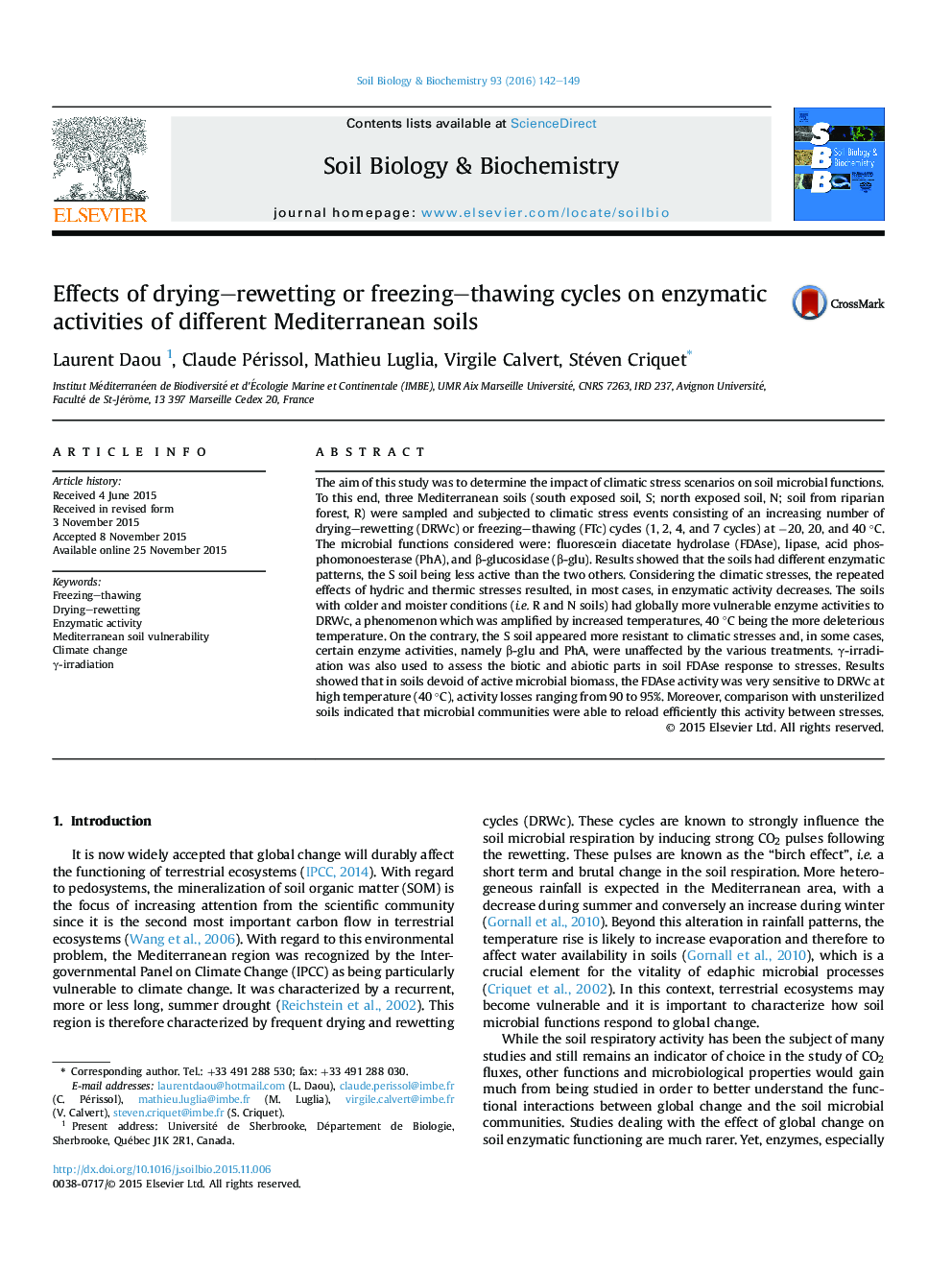| کد مقاله | کد نشریه | سال انتشار | مقاله انگلیسی | نسخه تمام متن |
|---|---|---|---|---|
| 2024253 | 1542591 | 2016 | 8 صفحه PDF | دانلود رایگان |

• Effect of drying–rewetting and freezing–thawing cycles on soil enzyme activities.
• When significant, effects of stresses mainly resulted in enzyme activity losses.
• Enzymes from colder and moister soils are more vulnerable to DRWc at 40 °C.
• FDAse activity was very sensitive to drying–rewetting at 40 °C in γ-irradiated soils.
The aim of this study was to determine the impact of climatic stress scenarios on soil microbial functions. To this end, three Mediterranean soils (south exposed soil, S; north exposed soil, N; soil from riparian forest, R) were sampled and subjected to climatic stress events consisting of an increasing number of drying–rewetting (DRWc) or freezing–thawing (FTc) cycles (1, 2, 4, and 7 cycles) at −20, 20, and 40 °C. The microbial functions considered were: fluorescein diacetate hydrolase (FDAse), lipase, acid phosphomonoesterase (PhA), and β-glucosidase (β-glu). Results showed that the soils had different enzymatic patterns, the S soil being less active than the two others. Considering the climatic stresses, the repeated effects of hydric and thermic stresses resulted, in most cases, in enzymatic activity decreases. The soils with colder and moister conditions (i.e. R and N soils) had globally more vulnerable enzyme activities to DRWc, a phenomenon which was amplified by increased temperatures, 40 °C being the more deleterious temperature. On the contrary, the S soil appeared more resistant to climatic stresses and, in some cases, certain enzyme activities, namely β-glu and PhA, were unaffected by the various treatments. γ-irradiation was also used to assess the biotic and abiotic parts in soil FDAse response to stresses. Results showed that in soils devoid of active microbial biomass, the FDAse activity was very sensitive to DRWc at high temperature (40 °C), activity losses ranging from 90 to 95%. Moreover, comparison with unsterilized soils indicated that microbial communities were able to reload efficiently this activity between stresses.
Journal: Soil Biology and Biochemistry - Volume 93, February 2016, Pages 142–149